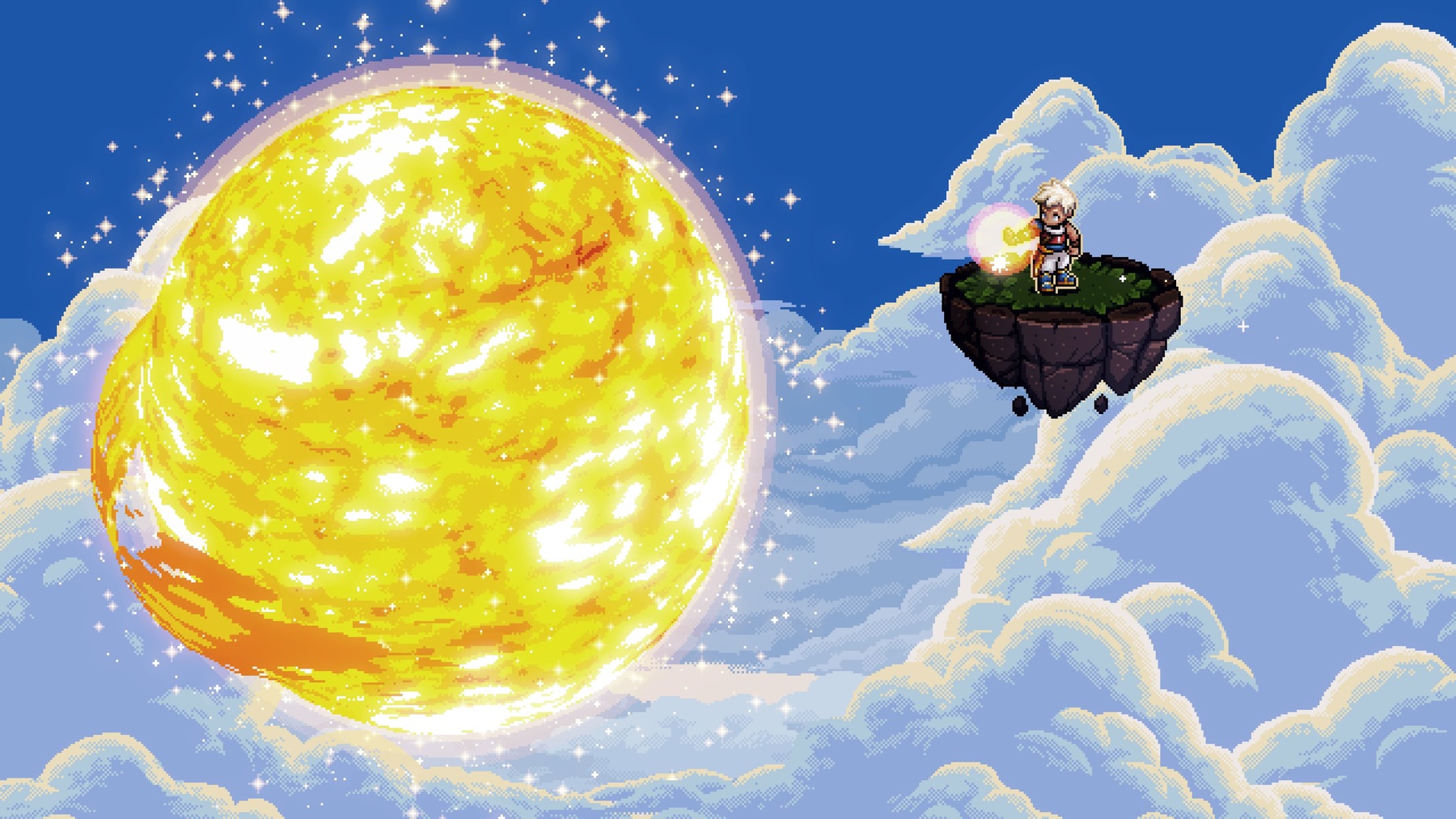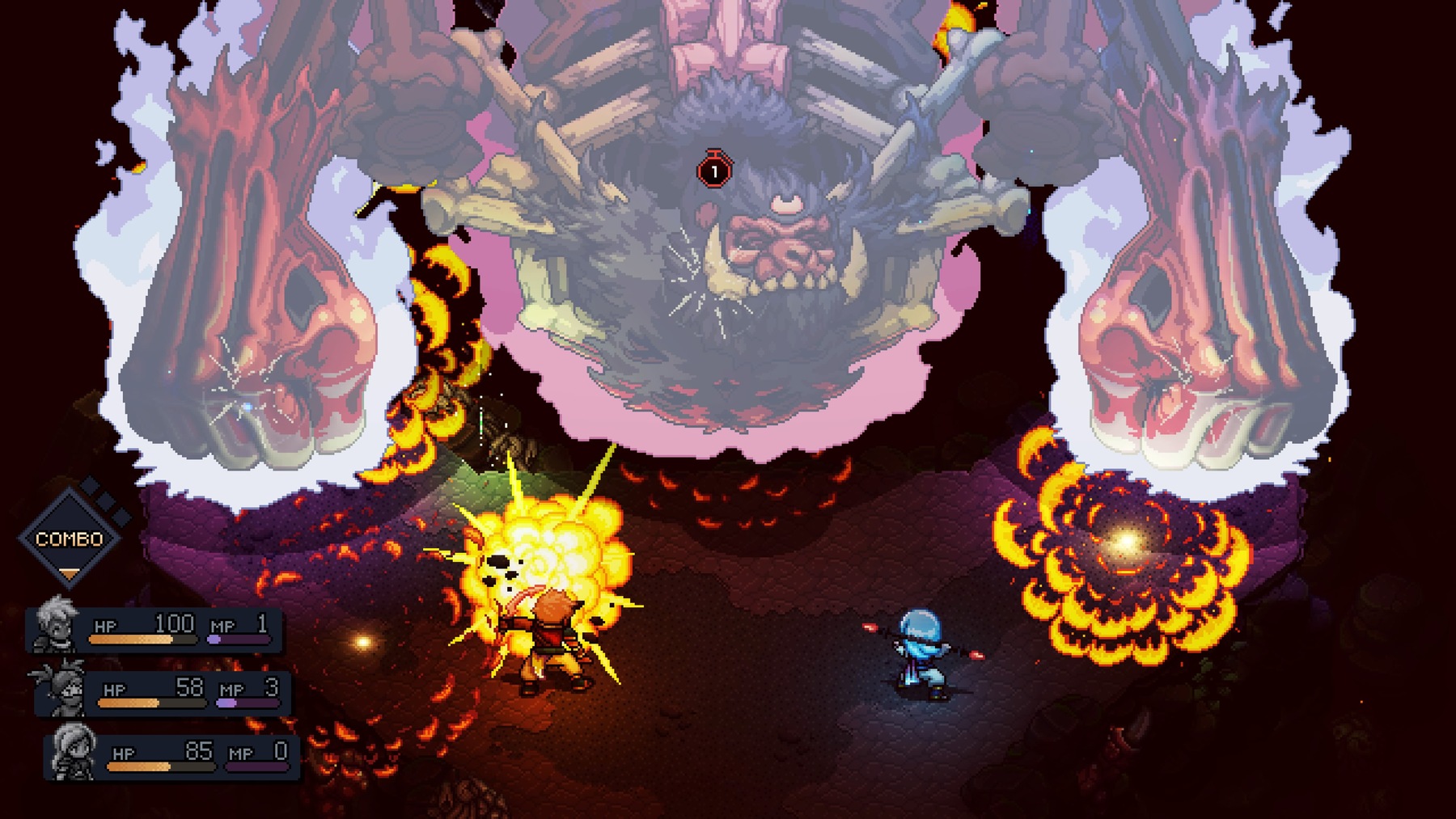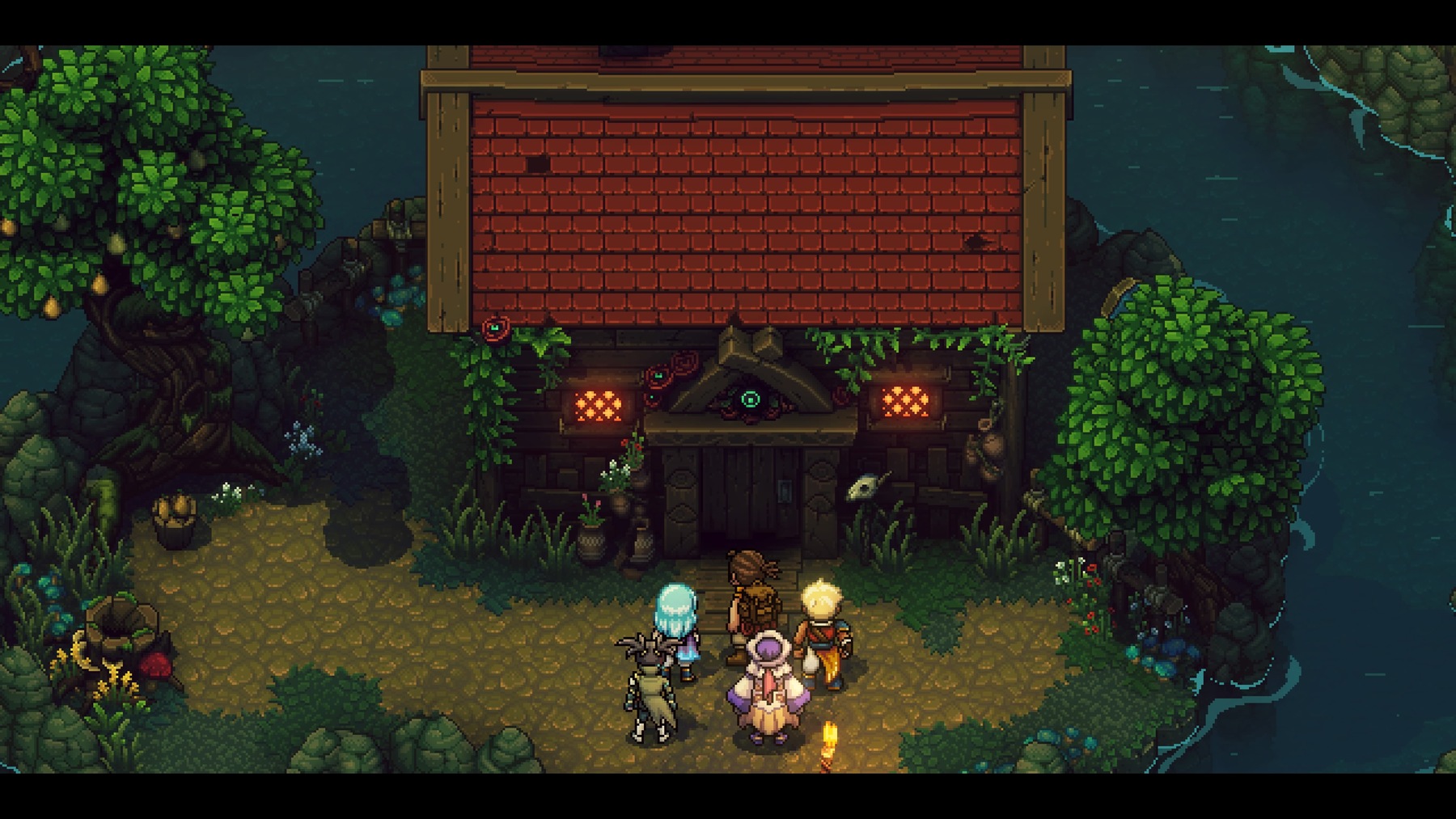Sea of Stars

Sea of Stars is an amazing role-playing adventure, with retro graphics and music that will instill 8-bit nostalgia. It’s very modern in its game design, and filled with really incredible artwork and characters. The gameplay pulled me in from the very start. I enjoyed this game, but parts of it do drag on. It’s a little long in the tooth, and the dialog is a mix of emotional and mediocre. It’s a game that held my attention strongly, but the story is somewhat lacking, and the gameplay does get a bit repetitive.
Gameplay
The gameplay format is pretty typical for any role-playing game. Combat mechanics are based around a careful balance of magic and physical attacks, with weaker physical attacks required to build magical energy. There’s a limit of 10 food/health items, but unlimited capacity for ingredients that can be cooked into food at save points. Most of the strategy is turn-based, but carefully timed button presses can grant double attacks or defensive guards.

It’s a very interesting and thought out health mechanic. Overall, the gameplay feels incredibly balanced. There are few surprise encounters, and enemy respawning is predictable. Each section is a mix of easy to understand puzzles, and combat encounters.

The game starts off mostly linear, later opening up to an open world. The stages felt really well put together, and there is an engaging story between boss fights and major sequences. Save points and checkpoints feel appropriately placed. Some of the fights do get challenging, but nothing ever feels overwhelming or unbalanced.

There is also a fun minigame called Wheels. It has some amazing retro mechanical artwork that’s reminiscent of steampunk. There’s no tutorial, but the menu contains rules, and they are fairly easy to figure out. Some of the championship games are heavily dependent on chance, but they are a fun little distraction.
Artwork
The artwork and music are easily the most impressive parts of this game. The graphics may look simple and pixelated, but modern hardware allows for all kinds of animation, beautiful hues, and intricate gradients. As in all RPGs, the combat music can get very repetitive. However, there’s a good amount of music for each individual region. All the tiny details in the trees, foliage and various environments really complete the overall setting. The artwork really helps with world-building, and helps the player feel like they’re traveling through a world that’s much bigger than it seems.

Story
The story starts off feeling incredibly heartwarming. You’re introduced to your two main protagonists, as well as their companion, a warrior cook. Their journey leads them through many battles on their way to new lands and adventures. You play as two Solstice Warriors, delivered by a mystical eagle to the village of Mooncradle as infants, where they are raised to battle the evil dwellers of their world.

There are some really amazing characters the adventurers encounter along the way. Some help you fight, while others have their own weird quirks. A lot of the dialog is really campy and cringeworthy, yet well over a third of it is heartwarming and insightful. It’s a weird mix of stories, which makes it feel like it’s a children’s game at times. There is some really amazing deep lore, with a storyteller who opens up the world in a way that’s creative and doesn’t depend on reading through game codecs.

There are also a few animated cuts sequences sprinkled throughout. They’re reminiscent of 1990s games, with full-motion animation slotted in as a reward for progressing through the story.

I really want to love the story. There’s a lot of buildup, but also a lot of explicit foreshadowing via prophecy. There are some parts that are very emotional, but other parts that are just dumb. It’s has deeply serious themes around the cost of progress and responsibility, but it’s paired with the most basic moral absolution. Some of the more tragic characters have revealing flashbacks, but their later motivations simply don’t make any sense despite their backstories. It has a generally fulfilling ending, but it steps over a lot of wreckage and unfinished ideas.

Conclusions
There are some truly emotional and well-frought parts of this game’s journey. Still, a lot of it just seems to drag. The world is beautiful, but even wonderfully drawn puzzles can still feel endless. Some backtracking is required throughout the game. It’s never a lot, but it’s still an instance where you’re fighting the game’s user interface.

This is a game I really couldn’t put down after getting through the opening. The game just flowed. Even though parts got repetitive, the world-building kept everything unique. I really want to love this game. I feel like it’s inspired by classic Final Fantasy titles, but it lacks a lot of consistency in the tone, lore and narrative. There are a lot of pieces that feel incredibly basic, despite the attempts at deep world-building.

At just over 35 hours, it’s a really fun game, but I feel like it could have easily cut a third out, and be more fulfilling. Still, for an independent, crowdfunded title, it has an amazing amount of passion poured into it. It’s a fun, beautiful and even fulfilling game, but I feel like there are parts of the world and story that could have been flushed out a lot better.